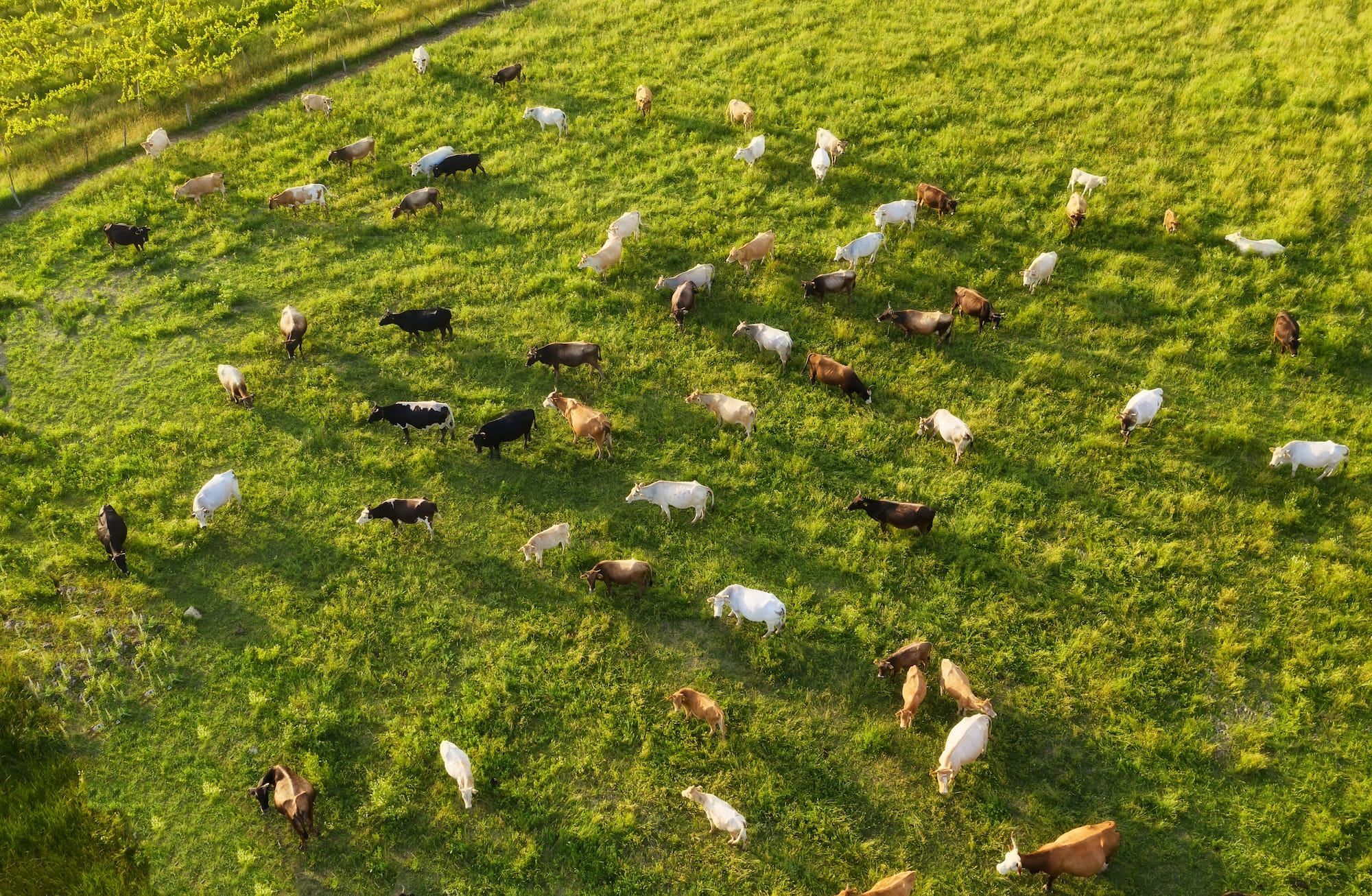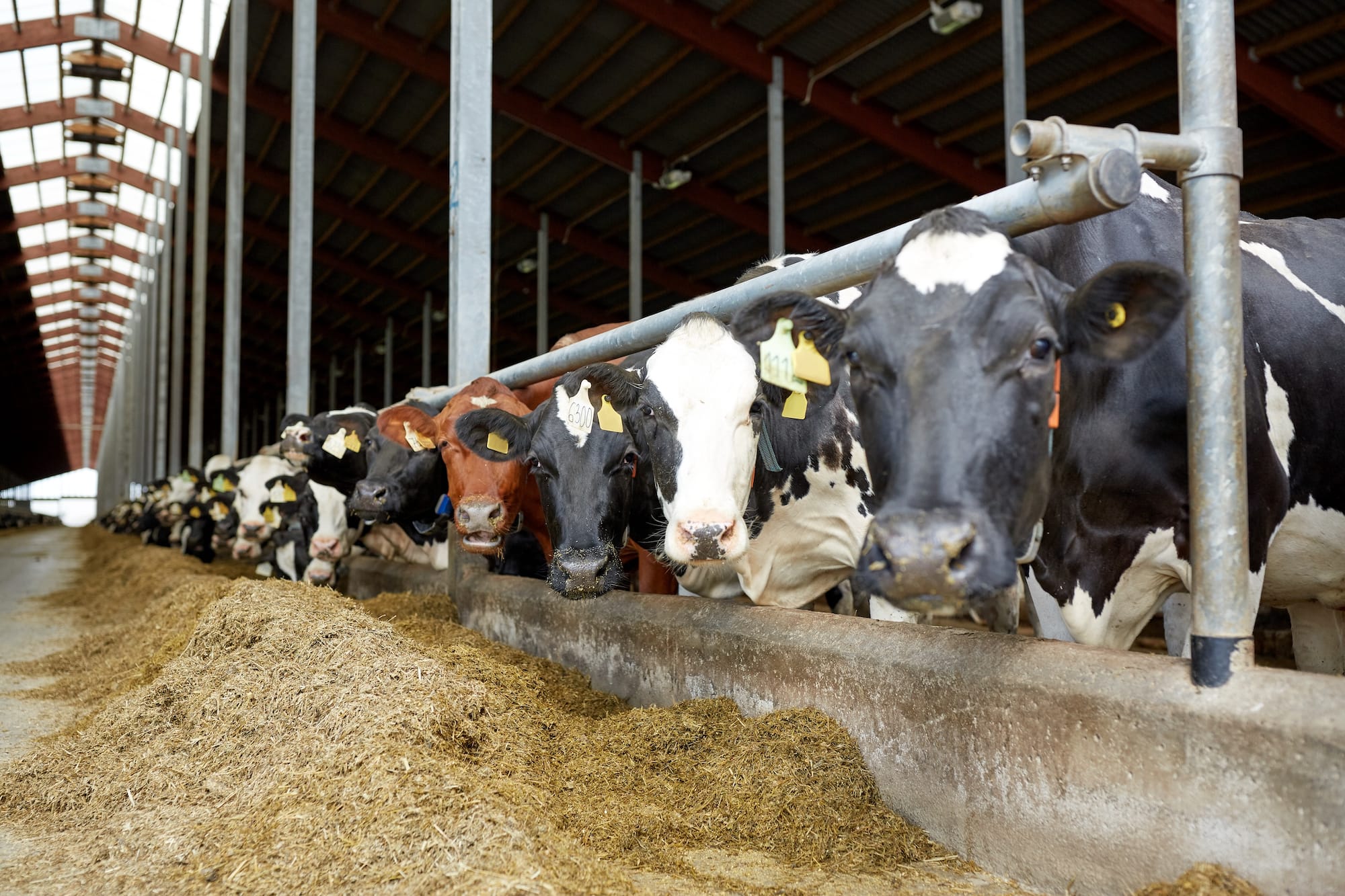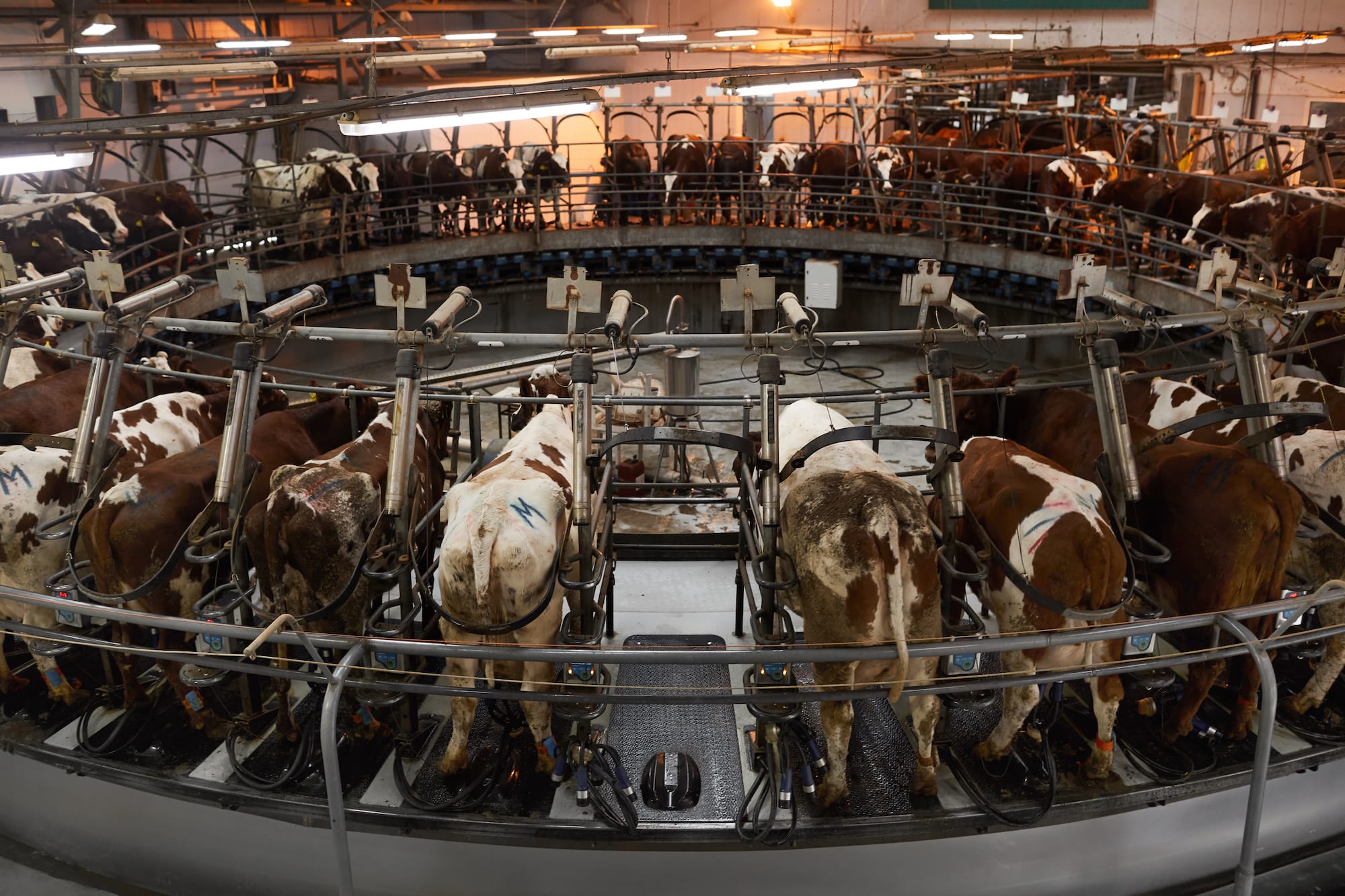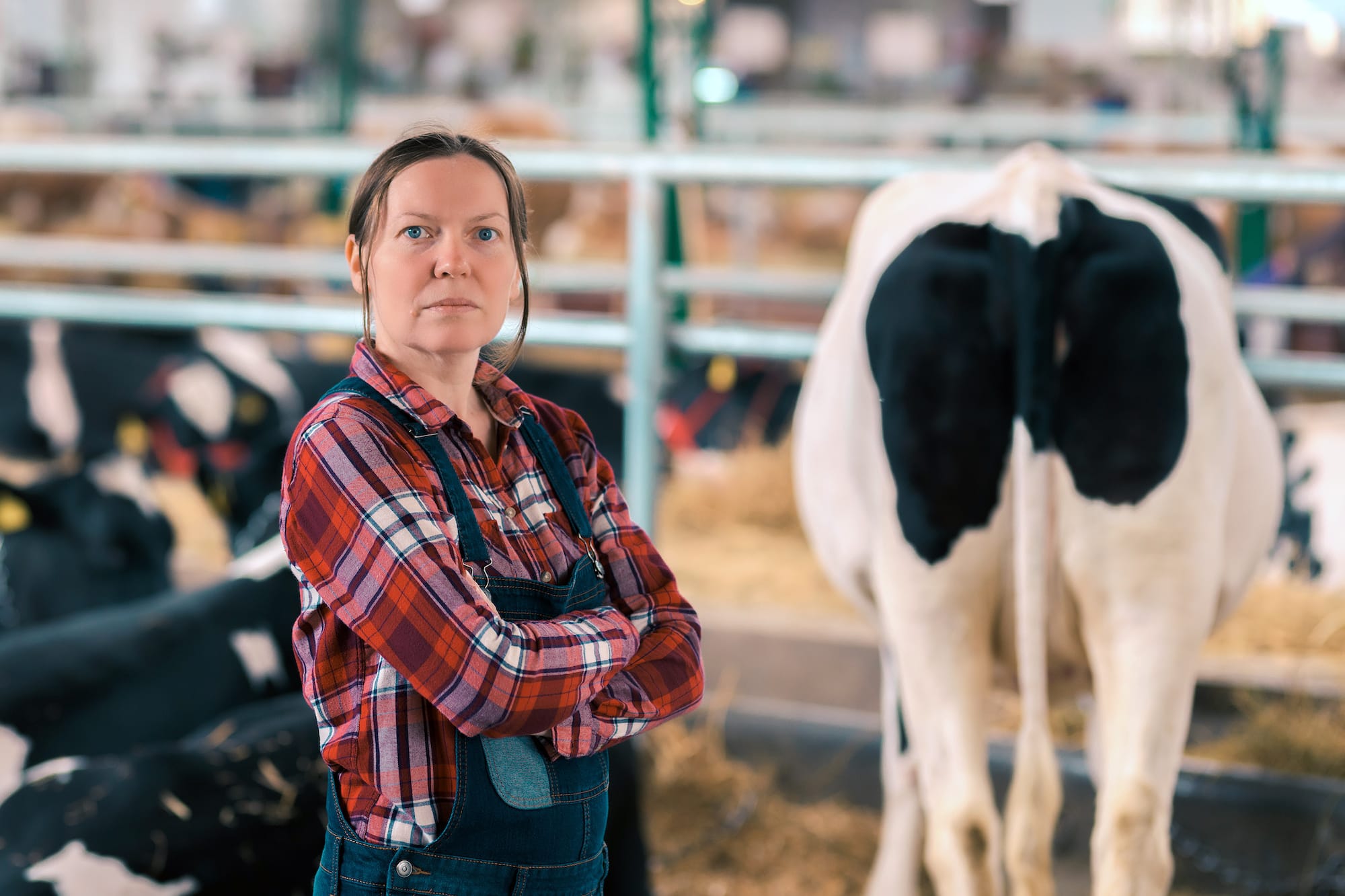Article Summary:
In Australia, dairy cow feeding systems depend on a lot of factors including climatic conditions and the location of the farm. There are five dairy farm feeding systems in Australia: low bail grazing, mod-high bail grazing, partial mixed ration, hybrid rations and total mixed ration. Pasture.io helps dairy farmers make their feeding decisions by providing them with information from feed tests and animal nutritional requirements. This article will cover the above and more.
- Why does the Australian dairy industry have so many different feeding systems?
- What are the three types of dairy feeding systems?
- What are the five farm feeding systems in the Australian Dairy industry?
- Which Australian dairy farming feed system is right for me?
- Can I use Pasture.io with any of the five Australian dairy feeding systems?
Why does the Australian dairy industry have so many different feeding systems?

The Australian dairy industry operates across one of the most diverse climates in the world. That means that dairy farmers must be ready for anything and manage adapted operations for their environment!
Farmers use different feeding systems depending on their location and in what region, and the production of their lactating animals. So, if you're a dairy farmer or looking to get into dairy farming in Australia, it's essential to know what those differences mean when working with cows.
Dairy Australia defines the dairy systems into three types of systems.
What are the three types of dairy feeding systems?

- Pasture-based systems
- Partial mixed ration (PMR)
- Total mixed ration (TMR)
The three systems above are reasonably self-explanatory for those who are familiar with dairy farming. However, for this article, we're going to tease apart these three types into five different dairy feeding systems.
This article will discuss these feeding systems and when they may or may not be suitable depending on the farm's location.
What are the five farm feeding systems in the Australian Dairy industry?

The range of feeding systems moves from the minor capital intensive to the most capital intensive. The least capital system is low bail where the cows graze a predominantly pasture-based diet, and the most capital intensive is the total mixed ration system (TMR).
TMR can include outlay on land for growing pasture and outlay on concrete and steel for feed pads, housing, and so on. TMR can also include equipment like mixer wagons and harvesting equipment.
Whereas in the pasture-based systems, the cows do all the harvesting.
These Australian dairy farm feeding systems all have pros and cons.
Dairy farmers need to research the different systems and think about what works best for their land in their location. A dairy farmer must consider many factors when deciding which plan is right for them, including soil types, rainfall amounts, nearby markets/suppliers with grain or fodder stores that a tractor-trailer, trucks can access, etc.
This research may seem like a lot to consider, but dairy farmers adapt their farm's systems all the time based on climatic and market conditions.
1. Low Bail
The low bail feeding system is the most common dairy feeding system in Tasmania. This finding is partly due to the climatic conditions that are inducive to growing pasture and the distance from ample fodder growing regions as seen on the mainland of Australia.
In the low bail feeding system, cows graze on grasses and other forages throughout the day and might be fed up to one ton of grain and concentrate in the dairy at milking time throughout lactation.
After being milked in the dairy (or milking parlour), the dairy cattle return to pasture.
Low bail is defined by the one-ton annual cap of grain or concentrates fed in the dairy bail.
2. Moderate to High Bail
The moderate to high dairy feeding system is similar to the low bail dairy farm, except cows are fed more grain or concentrate during milking time in the dairy shed.
The level of grain or concentrate fed in the bail is more significant than one ton per annum, and in this feed system, the livestock grazes pasture all year round, much the same as the low bail feeding system.
This finding is one of the most popular systems farmers operate according to Dairy Australia. Typically dairy farmers choose to feed in this dairy feeding system when they have access to nearby grain stores or fodder supplies.
Also, the critical aspect of moderate to high grain or concentrate feeding is to optimise pasture utilisation. By doing so, the feed conversion efficiency of the dairy cows can produce higher than seen in the low bail feeding system.
3. Partial Mixed Ration (PMR)
In the partial mixed ration (PMR) system, animals graze on pasture for most of the year, if not all of the year, while being fed a PMR on a feed pad.
Grain and concentrates may distribute in the PMR but typically augered into the dairy parlour during milking time.
4. Hybrid
Hybrid systems are usually found where growing grass all year is not feasible. With such conditions, hybrid feeding systems are classified as grazing pasture is possible for fewer than nine months of the year. Furthermore, a partial mixed ration or PMR is fed on a feed pad with or with grain or concentrate, which you might provide in the dairy parlour during milking.
This method is very similar to a PMR, except there is a greater emphasis on feed utilisation with a higher focus on feeding a PMR.
5. Total Mixed Ration (TMR)
A total mixed ration or TMR is the most capital intensive Australian dairy feeding system classified by zero-grazing, where cows are housed and fed a TMR.
Few farmers practise this system given the inducive pasture growing conditions in Australia and high input and labour costs.
Which Australian dairy farming feed system is right for me?

The feed system that suits your dairy farm depends on the following:
- Rainfall distribution and access to irrigation
- Access to fodder, grains or concentrate
- Dairy cow genetics
- Farm management practices and goals.
1. Rainfall distribution and access to irrigation
Without suitable rainfall or irrigation, can you grow pasture all year round?
For example, if summers are hot and dry and cultivars such as ryegrass do not survive, then you might be looking at the systems PMR, Hybrid, and TMR.
However, this depends on the point.
2. Access to fodder, grains or concentrate
Do you have access to fodder markets and or near grain and concentrate growing regions?
For example, suppose you have access to cheap and nutritious dairy quality feedstuff. In that case, you might benefit from a system of not growing your feed, such as ryegrass pasture or Kikuyu swards.
Much like the point on rainfall and irrigation, this will largely depend on whether you can grow pastures. More often than not, in Australia, pasture-based systems are highly sorted after.
3. Dairy cow genetics
Dairy cow genetics plays a role but is not as significant as the factors that you cannot change, such as farm location and region, climatic and environmental conditions, location to supplementary feed, etc.
Large American Holsteins are talked about as not efficient producers in predominantly pasture-based systems due to their size and their impact on the soil. They also demand a higher energy input for maintenance and gestation, which means that each kilogram of dry matter fed needs utilisation.
Large holsteins can produce a lot of milk and are typically found in housed systems or systems where grazing pasture is not the priority over feed padding.
4. Farm management practices and goals
Once you have covered the above points, you can determine what dairy farm production system works best for you.
For example, if your goal is to be profitable and efficient with land use, then it would make sense to graze as much pasture as possible where rainfall allows this. However, the dairy farm will need to use supplementary feeds if the grazing pastures cannot supply all of your cows' dietary requirements due to either poor growth or a lack of feed.
As a dairy farmer, you might choose grain or concentrate as these are relatively easy to provide and increase profit margins by increasing milk production per hectare. In this case, PMR would be appropriate given that pasture is not desired over other feed forms.
In saying all of this, do you have the farm management skills to jump from low bail to TMR?
Understanding this will help you know a clean set of goals and vision for your farm management.
Can I use Pasture.io with any of the five Australian dairy feeding systems?
you're wondering if you can use Pasture.io with any of the dairy farming systems, all you need to do is answer these questions:
- Is there internet or network connection on your farm?
- Do you have a phone, tablet or computer?
If so, then yes! You can use Pasture.io anywhere, and you can use it to make rations for your dairy cows.
You can use the nutrition tools today and find the information you need to make effective feeding decisions. We're committed to serving farmers with an integrated app. Sure the options are limited if your livestock doesn't graze pasture, but if they do, our tools will help you turn the page with a successful feeding system.
How does Pasture.io feed cows?
Within Pasture.io, you can enter feed tests and animal nutritional requirements. When you are balancing rations, you can see the following elements.
- Dry matter (DM)
- Neautral detergent fibre (NDF)
- Energy (ME)
- Crude protein (CP)
- Rumen degradable protein (RDP)
- Undegradeable protein (UDP), also known as bypass protein or rumen undegradable protein (RUP)
- Starch
These are high-level elements that will help you achieve your production goals. When balancing rations, it is always appropriate to consult a ruminant nutritionist. This way, you can ensure that the minerals and vitamins, among other dietary components, are suitable for your production and business goals.
We developed the app to manage pasture measurements for making grazing decisions. All of these systems have in common that farmers, wherever they are, are feeding cows, which is what Pasture.io does.
For years, our online app has helped farmers in the Australian dairy industry find the required rations for their animals and if you would like to do the same, contact us today.
Until we meet again, Happy Dairy Australia!
- The Dedicated Team of Pasture.io, 2021-10-06